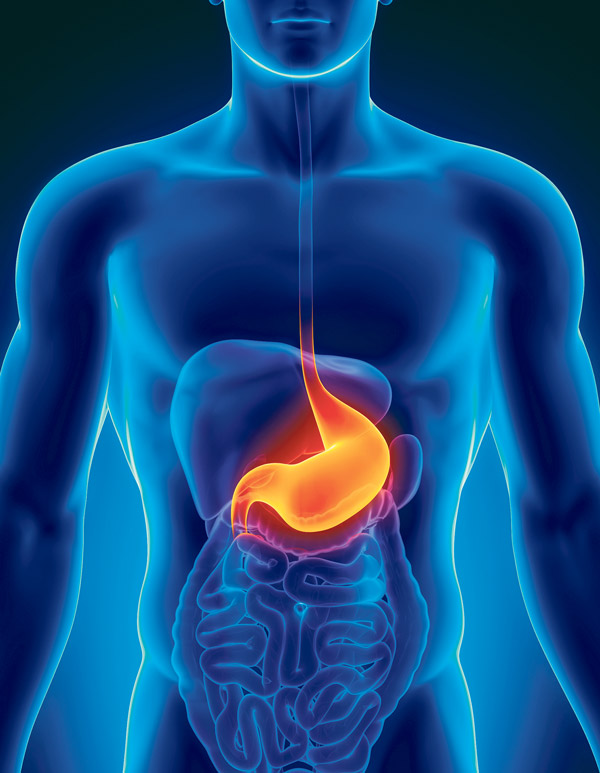Caracterización de los pacientes con enfermedad por reflujo gastroesofágico.
Resumen
Introducción: la enfermedad por reflujo gastroesofágico se define como la situación clínica que se produce a consecuencia del paso retrógrado del contenido gástrico al esófago, provocando síntomas, signos y complicaciones, con una elevada prevalencia.
Objetivo: caracterizar a los pacientes con enfermedad por reflujo gastroesofágico.
Método: se realizó un estudio transversal en pacientes con diagnóstico de enfermedad por reflujo gastroesofágico atendido en las consultas de gastroenterología del hospital Carlos Manuel de Céspedes de Bayamo en el período comprendido desde el primero de Noviembre del 2010 hasta el 31 de diciembre del 2012. Se utilizó el muestreo simple aleatorio.
Resultados: se estudiaron 240 pacientes, la edad media fue de 36,5 años, el 58,3% correspondió al sexo femenino, el 52,1 % de los pacientes presentaron algún tipo de lesión mucosa detectada en la endoscopia, estas fueron significativamente mayores en los bebedores y fumadores.
Conclusiones: la enfermedad por reflujo gastroesofágico tiene una mayor prevalencia en pacientes fumadores, bebedores habituales y obesos, aunque la hernia hiatal puede estar presente.
Descargas
Citas
1.El-Serag H, Hill C, Jones R. Systematic review: the epidemiology of gastro-esophageal reflux disease in primary care, usingthe UK general practice database. Aliment Pharmacol Ther [Internet]. 2008 Mar [citado 2013-12-19]; 29(5):470–80. Disponible en: http://www.ncbi.nlm.nih.gov/pubmed/19035977
2.Jonge PJ. de, Van Blankenstein M, Looman CW, Casparie MK, Meijer GA, Kuipers EJ. Risk of malignant progression in patients with Barrett’s oesophagus: a Dutch nationwide cohort study. Gut [Internet]. 2010 Aug [Citado 2013-12-19]; 59(8):1030–6. Disponible en: http://www.ncbi.nlm.nih.gov/pubmed/20639249
3.Urgesi R, Cianci R, Riccioni ME. Update on triple therapy for eradication of Helicobacter pylori: current status of the art. Clin Exp Gastroenterol [Internet]. 2012 [Citado 2013-12-19]; 5: 151–57. Disponible en: http://www.ncbi.nlm.nih.gov/pmc/articles/PMC3449761/
4.Mohammed I, Cherkas LF, Riley SA, Spector TD, Trudgill NJ. Genetic influences in gastro-oesophageal reflux disease: a twin study. Gut [Internet]. 2003 Aug [Citado 2013-12-19]; 52(8): 1085-9. Disponible en: http://www.ncbi.nlm.nih.gov/pubmed/12865263
5.Ponce J, Vegazo O, Beltrán B, Jiménez J, Zapardiel J, Calle D, et al. Iberge Study Group. Prevalence of gastroesophageal reflux disease is Spain and associated factor. Aliment Pharmacol Ther. 2006; 23: 175-84.
6.Holtmann G, Chassany O, Devault KR, Schmitt H, Gebauer V, Doerfler H, et al. International validation of a healthrelated quality of life questionnaire in patients with erosive gastro-oesophageal reflux disease. Aliment Pharmacol Ther [Internet]. 2009 Mar [Citado 2013-12-19]; 29(6): 615–25. Disponible en: http://www.ncbi.nlm.nih.gov/pubmed/19183145
7.Piqué JM, Kulich KR, Vegazo O, Jiménez J, Zapardiel J, Carlsson J, et al. Repercusión de la enfermedad en pacientes con reflujo gastroesofágico. Evidencia de un estudio metodológico reciente en España. Gastroenterol Hepatol [Internet]. 2004 [Citado 2013-12-19]; 27(5): 300-6. Disponible en: http://www.sciencedirect.com/science/article/pii/S0210570503704646
8.Vakil N, van Zanten SV, Kahrilas P, Dent J, Jones R. Global Consensus Group. The Montreal definition and classification of gastroesophageal reflux disease: a global evidence-based consensus. Am J Gastroenterology [Internet]. 2006 Aug [Citado 2013-12-19]; 101(8):1900-20. Disponible en: http://www.ncbi.nlm.nih.gov/pubmed/16928254
9.Lundell LR, Dent J, Bennett JR, Blum Al, Armstrong D,Galmiche JP, et al. Endoscopic assessment of esophagitis: clinical and functional correlates and further validation of the Los Angeles classification. Gut [Internet].1999 Aug [Citado 2013-12-19]; 45(2):172-80. Disponible en: http://www.ncbi.nlm.nih.gov/pubmed/10403727
10.Chen T, Lu M, Wang X, Yang Y, Zhan Y, Zhang J, et al. Prevalence and risk factors of gastroesophagea reflux symptoms in a Chinese retiree cohort. BMC Gastroenterology [Internet]. 2012 [Citado 2013 -12-19]; 12:161-66. Disponible en: http://www.biomedcentral.com/1471-230X/12/161
11.Lee SJ, Jung MK, Kim SK, Jan BI, Lee Sh, Kim ES, et al. Clinical characteristics of gastroesophageal reflux disease with esophageal injury in korean: focusing on risk factors. Korean. J Gastroenterol [Internet]. 2011 May [Citado 2013-12-19]; 57(5): 281-7. Disponible en: http://www.ncbi.nlm.nih.gov/pubmed/21623136
12.Shida H, Sakai Y, Hamada H, Takayama T. The daily response for proton pump inhibitor treatment in Japanese reflux esophagitis and non-erosive reflux disease. J. Clin Biochem Nutr [Internet]. 2013 Jan [Citado: 2013-12-19]; 52(1): 76–81. Disponible en: http://www.ncbi.nlm.nih.gov/pmc/articles/PMC3541423/
13.Chen S, Wang J, Li Y. Is alcohol consumption associated with gastroesophageal reflux disease? J Zhejiang Univ-Sci B [Internet]. 2010 Jun [Citado 2013 -12-19]; 11(6):423-28. Disponible en: http://www.ncbi.nlm.nih.gov/pmc/articles/PMC2880354/
14.Ford ES, Mokdad AH, Giles WH. Trends in waist circumference among U.S. adults. Obes Res [Internet]. 2003 [Citado 2013 -12-19]; 11(10):1223–31. Disponible en: http://onlinelibrary.wiley.com/doi/10.1038/oby.2003.168/pdf
15.Corley DA, Kubo A, Levin T, Block G, Habel L, Zhao W, et al. Abdominal Obesity and Body Mass Index as Risk Factors for Barrett’s Esophagus. Gastroenterology [Internet]. 2007 Jul [Citado 2013-12-23]; 133(1):34–41. Disponible en: http://www.ncbi.nlm.nih.gov/pubmed/17631128
16.Katz PO, Gerson LB, Vela MD. Guidelines for the Diagnosis and Management of Gastroesophageal Reflux Disease. Am J Gastroenterol [Internet]. 2013 Feb [Citado 2013-12-23]; 108:308 –28. Disponible en: http://www.nature.com/ajg/journal/v108/n3/full/ajg2012444a.html
17.Festi D, Scaioli E, Baldi F, Vestito A, Pasqui F, Di Biase AR, et al. Body weight, lifestyle, dietary habits and gastroesophageal reflux disease. World J Gastroenterol [Internet]. 2009 Abr; [Citado 2013-12-23]; 15: 1690-1701. Disponible en: http://www.ncbi.nlm.nih.gov/pubmed/19360912
18.Labenz J, Jaspersen D, Kulig M, Leodolter A, Lind T, Meyer–Sabellek W, et al. Risk factors for erosive esophagitis: a multivariate analysis based on the ProGERD study initiative. Am J Gastroenterol [Internet]. 2004 Sep [Citado 2013-12-23]; 99(9):1652–6. http://www.ncbi.nlm.nih.gov/pubmed/15330897

Publicado
Cómo citar
Número
Sección
Licencia
Avisos de derechos de autor propuestos por Creative Commons
1. Política propuesta para revistas que ofrecen acceso abierto
Aquellos autores/as que tengan publicaciones con esta revista, aceptan los términos siguientes:- Los autores/as conservarán sus derechos de autor y garantizarán a la revista el derecho de primera publicación de su obra, el cuál estará simultáneamente sujeto a la Licencia de reconocimiento de Creative Commons que permite a terceros compartir la obra siempre que se indique su autor y su primera publicación esta revista.
- Los autores/as podrán adoptar otros acuerdos de licencia no exclusiva de distribución de la versión de la obra publicada (p. ej.: depositarla en un archivo telemático institucional o publicarla en un volumen monográfico) siempre que se indique la publicación inicial en esta revista.
- Se permite y recomienda a los autores/as difundir su obra a través de Internet (p. ej.: en archivos telemáticos institucionales o en su página web) antes y durante el proceso de envío, lo cual puede producir intercambios interesantes y aumentar las citas de la obra publicada. (Véase El efecto del acceso abierto).







